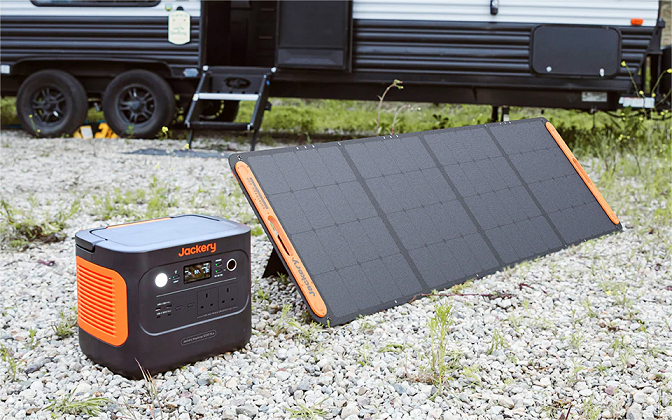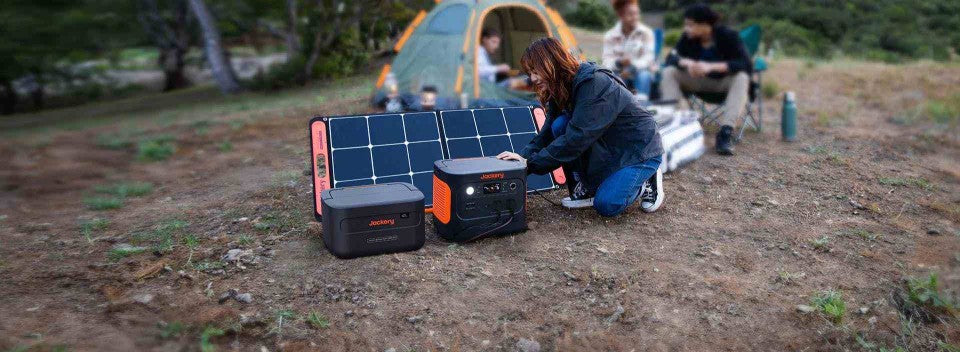Many UK households place a high premium on lessening electric bills, particularly in light of growing energy expenses. This comprehensive guide explores practical methods for reducing energy consumption and saving money. We discuss practical strategies to control your expenses, from adopting basic daily routines and selecting the right energy plan to understanding the benefits and drawbacks of prepayment meters.
We also explore long-term investments, such as energy-efficient home upgrades and renewable energy systems, including cutting-edge options like Jackery Portable Power Stations. These insights can help you take charge of your energy expenses and carbon footprint, whether your goal is immediate savings or long-term gains.
|
Key Takeaways: |
|
- The typical UK household uses approximately 3,600 kWh of electricity per year, with usage varying depending on lifestyle and home size. - You can significantly lower your electricity expenses by switching energy providers and selecting the appropriate tariff. - Portable power stations that enhance family energy resilience and enable off-grid renewable energy use include the Jackery Explorer 2000 v2 and the Jackery Explorer 3000 v2. - Although they give you control over your budget, prepayment meters usually cost more per unit of energy than regular credit meters. |
How Much Electricity Does the Average Household Use?
Knowing how much electricity the typical UK family uses is crucial before you start lessening your electric bill. An average household uses approximately 3,600 kWh of electricity annually. The number of people living in the home, the size of the household, and the equipment utilised all affect this amount.
Larger homes with families or electric heating may use more than 4,000 kWh of electricity per year, whereas smaller houses or apartments may use less, sometimes as little as 2,000 kWh per year. This amounts to approximately 300 kWh of electricity on average each month, though this amount varies depending on the season.
How do Seasonal Changes Impact Electricity Use?
During the winter months, households typically use a lot more electricity. This is mainly because homes need more heating to be warm and because there is less daylight, which necessitates more lighting. Due to the widespread use of electric heaters and heat pumps, power demand can increase significantly during the winter months.
Higher electricity demand during the winter months is partly a result of increased lighting use and more time spent indoors using electronics, such as computers and televisions. In contrast, there is typically less need for electric lighting during the warmer months, as heating is less necessary and natural light is more abundant.
Which Appliances Use the Most Electricity?
You can concentrate your energy-saving efforts if you know which equipment in your house uses the most electricity. Generally speaking, heating systems and heat pumps consume the most electricity, especially during the winter months. Another significant electricity user is the heating of water with electric boilers or immersion heaters.
Throughout the year, electricity consumption from frequently used household appliances, such as dishwashers, washing machines, and refrigerators, remains consistent. Electronics and entertainment devices, such as computers, gaming consoles, and televisions, contribute to increased daily consumption. Meanwhile, lighting uses a significant portion of electricity, which can be reduced by using energy-efficient light bulbs.
The Importance of Tracking Your Electricity Use
To lower your energy costs, it's essential to monitor your electricity usage. Real-time data from smart meters and online energy accounts can help you identify instances where electricity consumption is abnormally high or when certain equipment is using more energy than it should.
You can clearly see if you are using more electricity than similar households by tracking your usage and comparing it to average household levels. Additionally, you can choose the energy tariff that best suits your needs by understanding your consumption patterns, which may result in lower payments.
Electricity Saving Tips on Your Home
It is not necessary to give up convenience or comfort to lessen your electrical costs. You can significantly reduce your electricity usage and save money by implementing energy-efficient practices and making minor adjustments throughout your home.
Optimising the way and timing of appliance use, upgrading the insulation in your house, and implementing more energy-efficient technologies are all examples of energy-saving strategies. Along with other practical strategies to reduce your electric bill, the following advice focuses on key areas of the house where you can have the most significant impact on your electricity usage.

Saving Tips for Different Areas of Your Home
Kitchen
Due to appliances such as microwaves, dishwashers, ovens, and refrigerators, the kitchen consumes a substantial amount of electricity. Dishwashers consume less energy when they are full than when they are empty, so only run them when they are full to save electricity. Try to cook multiple dishes at once or use smaller, more energy-efficient appliances, such as slow cookers or microwaves, instead of relying on the oven or stove for extended periods.
Maintaining the proper temperature in your refrigerator and freezer, which is typically between 3°C and 5°C for the refrigerator and -18°C for the freezer, will help reduce wasteful energy use. Additionally, ensure that the freezer and refrigerator doors are securely closed to prevent cold air from entering, which would result in higher electricity usage.
Heating and Cooling
One of the main causes of electricity use, particularly during the UK's colder months, is heating. Setting your thermostat as low as comfortably possible—ideally between 18 and 19°C—and lowering it by 1°C can reduce your heating costs by approximately 10%. This is one of the most effective strategies for saving electricity. You can cut down on energy waste by heating your house only when necessary by using smart heating controls or programmable thermostats.
Additionally, make sure your house is well-insulated by caulking drafts and adding insulation to the walls, floors, and lofts. This is because inadequate insulation can cause heat loss, resulting in a significant increase in power costs. Avoid using air conditioning or electric fans needlessly during the hot months. Instead, cool your house naturally by opening your windows.
Lighting
Although lighting can contribute significantly to electricity consumption, using energy-efficient light bulbs, such as LEDs, can drastically reduce usage. LEDs last a lot longer and consume up to 90% less electricity than conventional incandescent bulbs. Turning off lights when you leave a room and utilising natural light whenever you can are two other ways to save lighting costs. In less frequently used areas, such as bathrooms or corridors, installing motion sensors or light timers can help reduce wasteful electricity use.
Laundry
It's common to overlook washing machines and tumble dryers as sources of excessive electricity use. Washing clothing at 30°C consumes significantly less energy than washing it at higher temperatures; therefore, use washing machines on lower temperature settings to save electricity. You should also always aim to wash full loads of laundry. Instead of using energy-intensive tumble dryers, let your clothes air dry wherever feasible. If a tumble dryer is required, ensure it is filled completely and keep the lint filter clean regularly to maintain efficient operation.
Additional Electricity Saving Tips
Unplugging equipment when not in use is another important strategy to reduce your electricity costs, as many devices continue to drain power even when turned off—a phenomenon known as "standby power" or "phantom load." Up to 10% of the electricity used in households may be generated from this source. An efficient way to turn off several devices at once is to use a power strip or smart plug. Additionally, purchasing high-rated, energy-efficient equipment lowers electricity consumption over time. Look for appliances with an A+++ rating when shopping for new ones, as they're designed to consume the least amount of energy.
Frequent appliance maintenance can help save energy use and increase appliance efficiency. For instance, cleaning the filters in heaters and air conditioners improves their efficiency, and routinely defrosting freezers avoids ice accumulation that makes the appliance work harder.
Lastly, consider switching your energy provider or tariff to one that better aligns with your usage habits. Using power during off-peak hours can save you money because some suppliers offer time-of-use tariffs that charge lower prices during those times.
In-depth Ways to Save Energy in Each Area of Your Home
Effective energy conservation typically requires significant upgrades to your home's systems and structure rather than merely adjusting everyday routines. You can significantly lower your electricity usage and make your home more comfortable all year round by investing in energy-efficient improvements. Reducing heat loss, increasing appliance efficiency, and utilising renewable energy sources are the main goals of these upgrades. Energy-efficient home upgrades can significantly lessen your electric bill in the following important areas:

Improving Insulation and Draught Proofing
In addition to improving comfort, energy-efficient home upgrades can lead to substantial electricity bill savings. Improving insulation is one of the most effective strategies to lower energy loss. Enhancing or adding loft insulation helps keep heat from escaping through the roof and keeps it inside your house.
In a similar vein, installing solid or cavity wall insulation helps lessen heat loss through walls, which is a frequent cause of energy waste. In order to reduce heating demands, it's also critical to use draught-proofing strips or sealant to close off gaps around doors, windows, and floors. This will prevent cold air from entering and warm air from leaving.
Upgrading Windows and Doors
Doors and windows play a crucial role in regulating the temperature of your home. By trapping air between glass layers, which serves as insulation, double or triple-glazing can greatly minimise heat loss from single-glazed windows.
Using thermal blinds or thick curtains at night adds an additional layer of insulation to existing windows, keeping the heat in. By installing draught excluders on doors, you can also prevent warm air from escaping and cold air from entering, thereby reducing the amount of energy required to heat your house.
Heating System Enhancements
You may significantly increase energy efficiency by upgrading your heating system. Because they transfer heat rather than producing it directly, heat pumps—such as air-source or ground-source heat pumps—are far more efficient than conventional electric heaters. You may prevent energy waste by heating your house only when necessary by using smart heating controls or programmable thermostats. Regularly maintaining your heating system ensures it operates efficiently and reduces electricity waste.
Lighting Improvements
Another easy yet efficient technique to save electricity is to upgrade the lighting. Changing all your light bulbs to LEDs can reduce electricity use because they last far longer and use up to 90% less energy than conventional lights. In addition to upgrading lightbulbs, adding motion sensors or dimmer switches reduces waste by turning lights on only when necessary. Another way to strike a balance between comfort and energy economy is to use daylight sensors, which modify lighting according to the amount of natural light.
Energy-Efficient Appliance Replacement
It is essential to replace outdated appliances with more energy-efficient models. Over time, new appliances with an A+++ rating save energy and money by using significantly less electricity than older models. By selecting appliances that suit your home's needs, you can minimise energy waste from large appliances. To further reduce electricity use, smart appliances can operate during off-peak hours or adjust their settings to maximise energy efficiency.
Renewable Energy and Smart Home Technologies
Lastly, over time, purchasing solar panels or other renewable energy sources can help reduce electricity costs. By using sunlight to generate electricity, solar photovoltaic panels reduce the amount of electricity you must purchase from the grid. By adding battery storage, you can increase your savings by storing excess energy for later use. Smart home solutions that combine lighting, heating and meter controls provide effective electricity management and real-time monitoring.
Switch Energy Suppliers to Lessen Electric Bills
One of the easiest and most efficient ways to lessen your electric bill without altering your energy usage is to switch energy providers. Many households continue to use default or standard tariffs, which are often more expensive than market-available options.
You could save a substantial sum of money annually by comparing energy providers and moving to a less expensive plan, particularly while energy prices are rising. Reviewing your energy plan on a regular basis will help ensure you are getting the greatest value.
What Energy Tariff Is Right for You?
The energy usage trends and preferences of your home will determine which energy tariff is best for you. There are several tariff types, including prepayment programs, variable-rate plans, and fixed-rate plans. A fixed-rate tariff gives you budgetary security and protects you from price rises by locking in your energy price for a predetermined amount of time.
On the other hand, variable tariffs involve some risk because they may be less expensive at first but could increase in tandem with market pricing. Prepayment meters give some homeowners financial control, but they are sometimes more expensive per unit.
The smart or time-of-use tariff is another alternative that is gaining popularity. These tariffs encourage customers to switch to less expensive off-peak hours by varying the cost of power based on the time of day. If you can use equipment like dishwashers, washing machines, and electric car chargers during times when rates are lower, you can save a lot of money. Nevertheless, it necessitates adaptable energy utilisation and awareness of your usage habits.
How to Evaluate and Change Energy Providers?
It's crucial to verify current offers from multiple suppliers using reliable price comparison tools before making a switch. In addition to the unit rate, compare standing costs and any exit fees that can be incurred if you decide to quit your current tariff early. Switching is usually a simple operation that doesn't involve any adjustments to your home setup or meter.
Nowadays, many vendors offer online solutions that facilitate rapid and easy switching. Your new supplier will often handle the transfer process when you decide to switch, which typically takes about three weeks. There is no interruption to your energy supply, switching is safe, and you should begin to experience bill savings in a billing cycle or two.
Extra Advice for Optimising Energy Tariff Savings
It's a good idea to examine your tariff every year and move if a better bargain comes along in order to maximise savings. To avoid moving to a more costly standard rate, if you are currently on a fixed tariff, make plans to switch before it ends. Additionally, consider suppliers that offer sustainable energy tariffs, which may include reasonable costs while also benefiting the environment.
Many organisations offer free, unbiased advice to help you determine the best course of action if you're unsure about tariffs or switching. By utilising these tools, you can negotiate the energy market with greater confidence and lower your electricity costs.

Can I Save Money with a Prepayment Meter?
Some homeowners use prepayment meters to manage their electricity bills, keeping expenditures under control and preventing unforeseen expenses. However, several variables, such as your energy usage patterns and the available rates, will determine whether a prepayment meter truly saves you money. You can determine whether prepayment meters are the best option for you to lessen your electric bill by being aware of their benefits and cons.
Knowing How Prepayment Meters Operate
You must pay for your gas and electricity before using a prepayment meter, typically by adding money to a key or card. By avoiding unforeseen high bills, this technique helps some households manage their energy expenditures.
Prepayment meters are more expensive per unit of energy than regular credit meters, although they offer a means of managing your energy consumption and preventing debt. This implies that even though you pay as you go, each electricity unit may cost more, which would not result in overall savings.
When You Could Save Money Using Prepayment Meters?
By limiting energy use to what has been paid for, prepayment meters can help certain households avoid large bills, particularly those that have struggled to recover from debt or have difficulty budgeting. They can also assist those who prefer to pay for their energy bills as they go, giving them more control over their daily expenses. Additionally, some energy providers offer prepayment meter customers special tariffs that may occasionally lower their costs.
The Drawbacks of Prepayment Meters
Prepayment meters typically have higher unit rates and standing charges; thus, even with budgeting advantages, the total cost is often higher than with other tariff types. It can be quite annoying and uncomfortable, particularly in cold weather, to have your supply shut off until you top up again if your credit runs out. To make matters more difficult, several consumers complain that they have trouble topping up in remote locations or during peak hours.
Other Ways to Reduce Energy Costs Without a Prepayment Meter
It may be more economical to switch to a standard credit meter with a competitive tariff if lowering your power bill is your top priority. Numerous vendors offer reasonable rates without the additional per-unit expenses linked to prepayment meters.
Without the drawbacks of prepayment systems, smart meters and online applications can help individuals manage their bills and monitor usage, particularly those concerned about budgeting. Additionally, some energy providers offer alternatives to prepayment meters by providing payment plans and assistance programs for consumers struggling to pay their bills.
Big Investments for Long-Term Cash and Carbon Savings
Larger investments can result in significant long-term lessening of your electricity bills and help lower your carbon footprint, even though many energy-saving measures only need simple house upgrades or behavioural adjustments.
Although these investments often require upfront expenditures, they can lead to a higher home value, greater energy independence, and reduced energy consumption. Whether you choose to install renewable energy, upgrade your heating system, or use modern energy storage, these choices offer long-term financial and environmental advantages.
Home Renewable Energy Systems
One effective strategy to lessen your dependency on the grid and lower your electricity costs is to install renewable energy systems, such as solar photovoltaic (PV) panels. With solar panels, you may create your own energy without having to pay for fuel every time you use it. When combined with battery storage, this technology enhances savings by allowing you to store excess power for use during periods of high demand or at night. Because solar installations drastically reduce the amount of energy you need to buy, they can eventually yield a high return on investment.
Jackery Portable Power Stations as Energy Storage Options
The Jackery Explorer 2000 v2 and Explorer 3000 v2 are two examples of innovative energy storage systems that provide flexible and environmentally friendly solutions for managing your home's energy. During periods of high demand or power disruptions, these portable solar generators can augment your electricity supply with clean, off-grid power. While offering dependable energy backup, using these cutting-edge battery stations will help you become less reliant on fossil fuel-based grid electricity and reduce your overall carbon emissions. They are particularly helpful for homes without a complete home battery system that wants to integrate renewable sources or improve energy resilience.

Improvements to Insulation and Heating
Investing in upgraded insulation and contemporary, energy-efficient heating systems also results in significant savings. Heat pumps utilise ambient heat from the ground or air, which is far more efficient than conventional electric heaters; therefore, they require less electricity for heating. When paired with more extensive insulation improvements, such as wall, floor, and loft insulation, you can minimise heat loss, reduce the strain on your heating system, and ultimately lower your energy costs.
Smart Home Technologies
Another way to maximise energy use is to invest in smart home technologies. Lighting controls, thermostats, and smart meters enable the precise monitoring and management of electricity use. In order to prevent energy waste, these systems can automatically modify lighting, heating, and appliance consumption according to occupancy or time of day. These solutions ultimately reduce electricity costs and provide valuable data for future efficiency improvements.
Jackery Portable Power Station for Saving Electric Bills
While a Jackery Portable Power Station isn't a direct replacement for your home's grid connection, it can help you save on your electric bill in a few key ways, particularly when paired with Jackery Solar Panels.
The most significant way a Jackery can save you money is by allowing you to generate your own electricity using solar panels. When you charge your Jackery with solar, you're essentially getting free energy from the sun. You can then use this stored energy to power your devices and appliances, reducing your reliance on grid electricity.
Many utility companies have "time-of-use" billing, where electricity costs more during peak demand hours (e.g., late afternoon and evening). You can charge your Jackery during off-peak hours when electricity is cheaper (or using solar during the day) and then use the stored power to run appliances during peak hours. This effectively "shaves" your peak electricity consumption, leading to lower bills. Here, we recommend Jackery Explorer 2000 v2 and 3000 v2.
Jackery Explorer 2000 v2
The Jackery Explorer 2000 v2 is a strong contender for helping to save on electric bills. Although there is an initial investment, the combination of its capacity, durability, and solar integration makes it a viable tool for long-term cost reduction of electricity.

Large Capacity and High Output: The 2042Wh capacity, 2200W AC output, and 4400W peak allows it to store a significant amount of energy, enough to power essential household appliances for extended periods (e.g., a refrigerator for around 4 hours, or a TV for over 14 hours). This means you can rely on it to reduce your grid consumption for more than just small devices.
LiFePO4 Battery Chemistry (Long Lifespan): The Explorer 2000 v2 utilises a LiFePO4 (Lithium Iron Phosphate) battery, which is renowned for its long cycle life. Jackery states it can last over 10 years with up to 4000 charge cycles before reaching 80% capacity. This long lifespan means your initial investment will pay off over many years, contributing to greater overall savings.
Excellent Solar Charging Capability: The Solar Generator 2000 v2 typically includes Explorer 2000 v2 with Jackery SolarSaga 200W solar panel. This allows you to charge the power station directly from the sun, converting free solar energy into usable electricity. With three 200W solar panels, it can be fully recharged in approximately 6 hours of ideal sunlight. This efficient solar charging is the primary mechanism for generating "free" electricity to offset your grid consumption.
Portability and Versatility: While powerful, the 2000 v2 is designed to be relatively portable, weighing approximately 17.9 kg (39.5 lbs) for the unit itself. This allows you to move it to where power is needed most, whether it's powering outdoor work, RV trips, or simply moving it around your home to power different appliances. Its use in diverse scenarios further justifies the investment by replacing other power sources (like fuel generators) that incur ongoing costs.
Jackery Explorer 3000 v2
Choosing the Jackery Explorer 3000 v2 to save on electric bills is a step up from smaller units like the 2000 v2, primarily due to its significantly larger capacity and higher power output, which allows for more substantial and prolonged offsetting of grid electricity.

Massive Capacity (3072Wh): A 3072Wh capacity allows you to power more demanding appliances for extended periods. Think about running a refrigerator, a portable AC unit, or even multiple devices simultaneously for a considerable time.
Higher Output Power (3600W Continuous, 7200W Peak): The 3600W continuous output means the 3000 v2 can handle almost any household appliance, including many that smaller power stations struggle with (e.g., larger portable AC units, some power tools, or multiple kitchen appliances simultaneously). The 7200W surge capacity is crucial for appliances with high startup demands (like refrigerators and microwaves), ensuring they can run smoothly without tripping the system.
Advanced LiFePO4 Battery Chemistry: Like the 2000 v2, the 3000 v2 utilises LiFePO4 batteries. However, it's explicitly rated for 4000 charge cycles before reaching 70% capacity retention. This is a very impressive lifespan, suggesting the unit can provide significant energy savings for 10 years or more, even with frequent daily use. This long-term durability enhances the return on your investment.
ZeroDrain Technology: The 3000 v2 features "ZeroDrain" technology, which claims 95% power retention after 365 days of inactivity, along with ultra-low self-consumption when powered off. This minimises wasted stored energy if you don't use it constantly, ensuring maximum availability for when you need to offset your grid use.
FAQs
The following are the frequently asked questions about how to lessen your electric bills.
1. What runs your electric bill up the most?
Heating systems, electric showers, and energy-intensive appliances such as refrigerators, washing machines, and tumble dryers are the primary causes of high electricity bills. In many families, especially those with electric heating systems, heating the house usually consumes the most electricity. Using outdated or inefficient equipment and putting appliances on standby are additional causes that raise expenses. Frequent use of power-hungry electronics and excessive lighting use also raise bills.
2. How can I reduce my electricity bill?
Use energy-efficient equipment, switch off lights and electronics when not in use, and modify your habits, such as washing clothing at a lower temperature, to cut your electricity costs. Other efficient cost-cutting measures include upgrading home insulation to reduce heating requirements and switching to a more affordable energy plan. While implementing renewable energy solutions can further reduce reliance on grid electricity, installing smart meters and timers can help monitor and manage usage.
3. How can I reduce the amount of electricity?
Using energy-efficient light bulbs, avoiding unnecessary use of high-power devices, and completely shutting off equipment rather than leaving it on standby are all ways to reduce electricity consumption. Optimising heating and cooling through thermostat programming and insulation upgrades reduces energy waste. Regular appliance maintenance ensures that appliances operate efficiently, and unplugging chargers and electronics when not in use prevents phantom energy drain.
4. Does turning the kettle off at the wall save electricity?
Because some gadgets consume a tiny amount of power even when turned off—known as standby or "phantom" energy—turning off the kettle at the wall does save electricity. Turning off the outlet eliminates this standby power use, gradually reducing wasteful electricity consumption. The savings per kettle may be modest, but when paired with additional gadgets, they add up to a discernible decrease in total energy consumption.
5. What wastes the most electricity in the house?
Appliances left on standby, poor heating systems, and devices utilised for longer than necessary usually account for the majority of electricity waste. Many gadgets utilise energy even while they are not in use, and standby power can make up as much as 10% of household electricity consumption. Draughts and inadequate insulation can make heating systems work harder, which increases waste. Older appliances and inefficient lighting contribute to needless electricity use.
Final Thoughts
Lessen your electric bill by combining sensible everyday practices with astute decisions regarding energy providers and rates. Investing in energy-efficient upgrades and renewable technology delivers significant long-term savings and environmental benefits, even though minor adjustments can have an instant impact. You can increase your household's energy independence by being aware of how much energy you use, checking your tariff frequently, and considering contemporary energy storage options, such as Jackery Portable Power Stations.


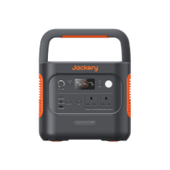
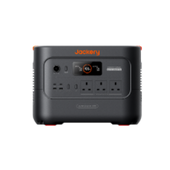
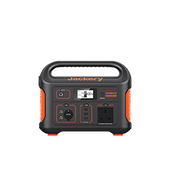

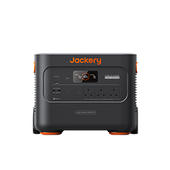
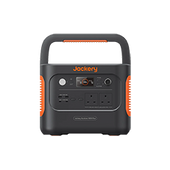
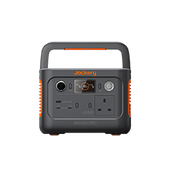
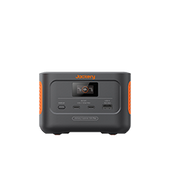
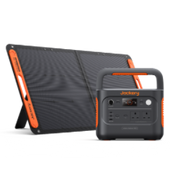
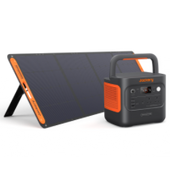
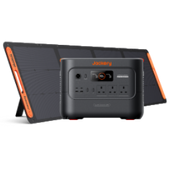
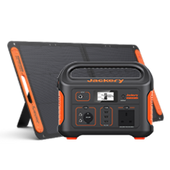
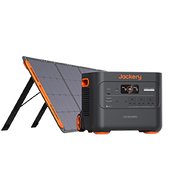
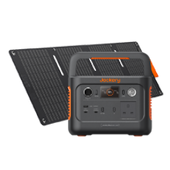
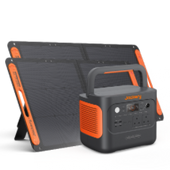
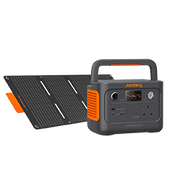
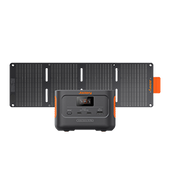

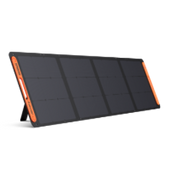
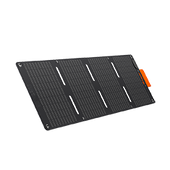
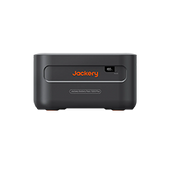
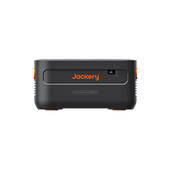
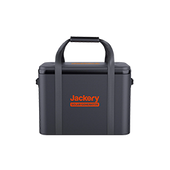

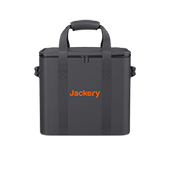
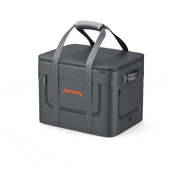



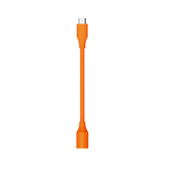
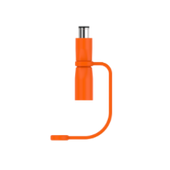

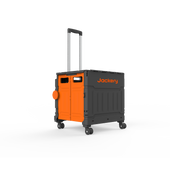
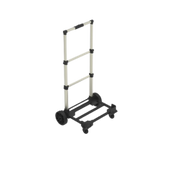




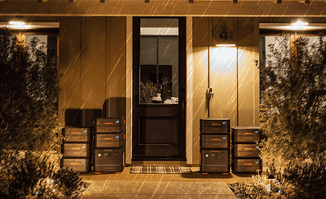


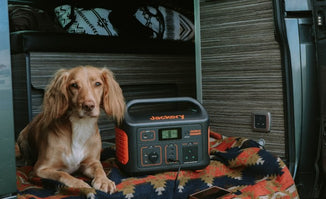


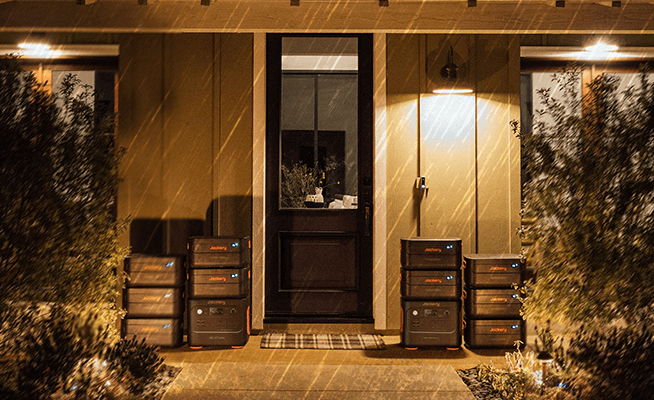

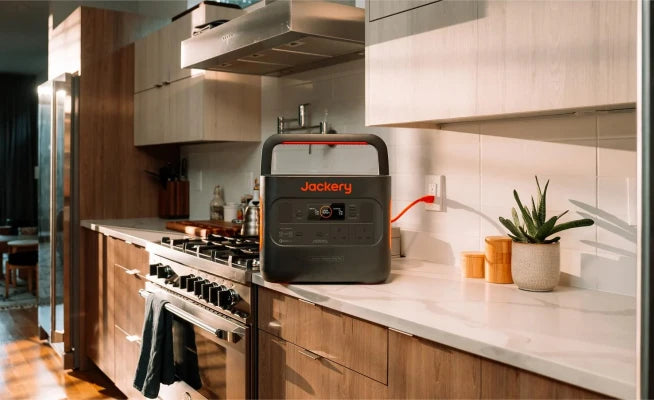
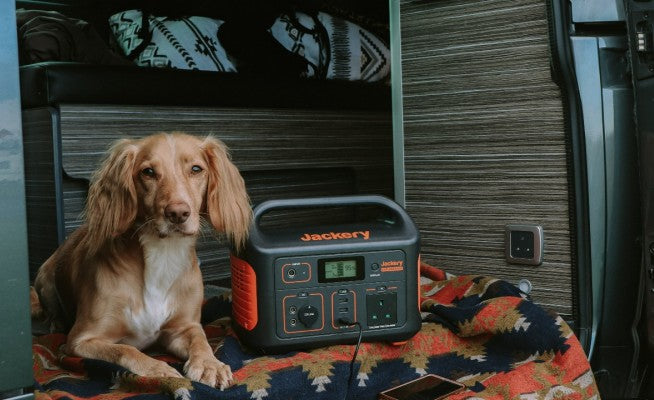






![How to Lessen Your Electric Bill? [Electric Bill Saving Tips]](http://uk.jackery.com/cdn/shop/articles/how_to_lessen_your_electric_bill_30130abf-f52a-45d7-8c84-3191eaf8d2c8.png?v=1750663993)





